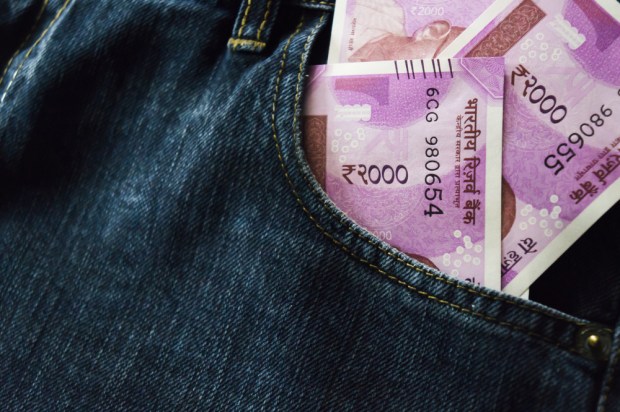India’s Real-Time Look At Moving Cash To Digital

Taking 86 percent of notes of circulation late last year has brought a tipping point to India’s digital payments activity. In the latest Topic TBD, MoneyOnMobile CEO Harold Montgomery gave Karen Webster a bird’s eye and ground level view of how technology is shaping, and improving financial inclusion for the 1.3 billion consumers who live there.
Financial inclusion is a worthy goal of many countries as they seek to level at least some economic playing fields. Technology is helping smooth the way for such inclusion.
In the latest installment of Topic TBD, Harold Montgomery, CEO of MoneyOnMobile, said that India is undergoing a sea change in the very nature of payments — the way they are done and how — because of the much publicized demonetization that took high denominations out of the economy in one fell swoop.
The executive told PYMNTS’ Karen Webster noted that India has a population of 1.3 billion people in total, with 900 million of that tally considered wage-earning adults who are moving money around and most of those people, according to Montgomery, defined as unbanked.
In fact, he said, “only about 15 percent of that population report ever having used a bank account in their entire lives.”
That comes despite initiatives in the past from the government that had looked to incentivize traditional banking activity (such as paying people to open accounts and maintain them). And, he said, over 90 percent of all transactions done prior to demonetization were done in cash, with problems arising in counterfeit transactions and tax avoidance.
As a result, said Montgomery, the unbanked population, he stated, is one who has “wanted to transact and appreciates convenience.” Among the key attractions, he elaborated, had been and continues to be the aggregation of bringing, for example, half a dozen transactions to a single location — a function that can save people tremendous amounts of time.
Against the Modi government’s demonetization late last year, the shock of the government’s initiative led to an immediate boost in adoption of mobile payments conduits with policy acting as a tailwind.
Webster noted that lack of infrastructure and even lack of identity via bank accounts could be viewed as impediments to innovation in payments in India. To get an on ramp to financial services inclusion, said Montgomery, the government has identified certain transaction sizes as needing KYC (or not). For example, he said, for “moving down the ladder” toward simpler transactions such as prepaid airtime for cellphones (there are a billion of these phones in India alone) or TV time, “these transactions are unregulated and do not require identities,” but larger, domestic remittances do require such identifications in place.
Thus, he continued, the Indian government has moved to institute a universal identification, Adhaar (and based on demographic and biometric data), which has covered 80 percent of the population, furthering the demand for apps, for financial services and for lending. But adoption of new technology to satisfy this demand represents a classic chicken-and-egg problem for payments innovation, said Montgomery, where the merchant and the consumer must buy in to the same transaction and technological conduits.
In India, said Montgomery, the price of entry into that transaction and new way of doing things digitally must be low, which is the aim of many in the region, the card networks via BharatQR and Montgomery’s own MoneyOnMobile network, which uses handheld devices that can accept, through Bluetooth, a card swipe so that people can withdraw cash at a merchant location rather than at a bank, using a specialized terminal. That terminal, he said, costs $40 to $50 (U.S. dollars), and demand has been high enough so that price point can drop even further to as low $20.
Being able to transact locally in a digital format so that the money is stored safely “is a powerful financial inclusion step,” said the executive.
And financial inclusion can extend beyond the unbanked in India, said Montgomery, to include the underbanked population, as there are 155,000 bank branches in that nation, but 600,000 towns and cities. Clearly there is an imbalance for financial services as most people in India, even those who have bank accounts, do not live near or have ever interacted with a bank branch.
As for education, he said, there are different ways to approach that initiative, but it is clearly a long road. It takes several months, said Montgomery, for users to become comfortable enough to trust broader use cases, such as remittances that are taken out of salaries. The education, he said, must be “one on one” between those merchants and consumers.
